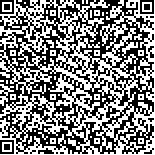| 摘要: |
| [摘要] 目的 观察紧急钻颅联合顺序硬脑膜剪开术治疗特重型颅脑损伤伴脑疝的临床疗效。方法 选取2012-01~2014-12于该院接受手术治疗的特重型颅脑损伤伴脑疝患者64例,随机分为A组和B组各32例,A组行紧急钻颅、标准大骨瓣减压术及顺序硬脑膜剪开术,B组行标准大骨瓣减压和一次性硬脑膜剪开术,观察两组术中急性脑膨出发生率、瞳孔变化情况以及术后6个月的预后情况。结果 A组发生急性脑膨出7例(21.88%),B组18例(56.25%),A组急性脑膨出发生率明显低于B组,差异有统计学意义(P<0.01)。A组瞳孔恢复正常10例(31.25%),缩小18例(56.25%),无变化4例(12.50%);B组恢复正常5例(15.63%),缩小13例(40.63%),无变化14例(43.75%),A组瞳孔恢复情况明显优于B组,差异有统计学意义(P<0.05)。A组死亡2例(6.25%),植物生存2例(6.25%),重度残疾8例(25.00%),轻度残疾8例(25.00%),恢复良好12例(37.50%);B组死亡6例(18.75%),植物生存5例(15.63%),重度残疾9例(28.13%),轻度残疾7例(21.88%),恢复良好5例(15.63%),A组术后6个月恢复情况明显优于B组,差异有统计学意义(P<0.05)。结论 紧急钻颅联合顺序硬脑膜剪开术治疗特重型颅脑损伤伴脑疝减压效果显著,能够显著降低术中急性脑膨出的发生率,明显改善患者预后,降低患者病死率及致残率。 |
| 关键词: 紧急钻颅 顺序硬脑膜剪开术 特重型颅脑损伤伴脑疝 |
| DOI:10.3969/j.issn.1674-3806.2016.02.12 |
| 分类号:R 651.1+5 |
| 基金项目: |
|
| A clinical research on the emergent drilling on the skull bone and sequential dura incision in the treatment of the severe head injury with cerebral hernia |
|
HAN Xiao-ming, CHAI Feng, ZHOU Wen-jiang, et al.
|
|
Department of Neurosurgery, the People′s Hospital of Jiuquan City, Gansu 735000, China
|
| Abstract: |
| [Abstract] Objective To explore the clinical efficacy of the emergent drilling on the skull bone and sequential dura incision in the treatment of the severe head injury with cerebral hernia.Methods Sixty-four cases with severe head injury and cerebral hernia who received surgical treatment in our hospital from January 2012 to December 2014 were randomly divided into group A and group B by the random number table method. Group A received an emergent drilling on the skull bone, a standard decompressive craniectomy and the sequential dura incision. Group B received the standard decompressive craniectomy and the one-time dura incision. The incidence of acute encephalocele, the change of the pupil size and the prognostics after sixth months of the surgery were compared between the two groups.Results The acute encephalocele was found in 7 cases(21.88%) in group A, and 18 cases(56.25%) in group B, with a significant difference(P<0.01). The normal pupils were found in 10 cases(31.25%), the contracted pupils in 18 cases(56.25%) and no change in 4 cases(12.50%) in group A. The counterpart changes occurred in group B were 5 cases(15.63%) in normal pupils, 13 cases(40.63%) in contracted pupils and 14 cases(43.75%) without changes. The changes of the pupil size of group A improved better than those of group B(P<0.05). In group A, 2 cases(6.25%) died, 2 cases(6.25%) were in vegetative state, 8 cases(25.00%) were severely disable, 8 cases(25.00%) were mildly disable and 12 cases(37.50%) recovered well. In group B, 6 cases(18.75%) died, 5 cases(15.63%) were in vegetative state, 9 cases(28.13%) were severely disable, 7 cases(21.88%) were mildly disable and 5 cases(15.63%) recovered well. Group A recovered better than group B(P<0.05).Conclusion The emergent drilling on the skull bone and sequential dura incision have significant effects on reducing the intracranial pressure. They can reduce the incidence of the acute encephalocele, improve prognosis and reduce the mortality and morbidity rates. |
| Key words: Emergent drilling on the skull bone Sequential dura incision Severe head injury with cerebral hernia |

